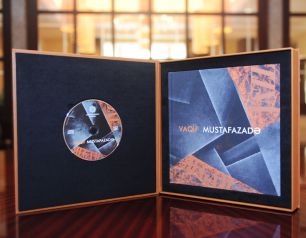
A music album devoted to the life and creative activity of Vagif Mustafazadeh has been published within a joint project by the Heydar Aliyev Foundation and the Heydar Aliyev Centre
A music album devoted to the life and creative activity of virtuoso performer, eminent musician Vagif Mustafazadeh has been published within a joint project by the Heydar Aliyev Foundation and the Heydar Aliyev Centre. Authored by Rauf Farhadov, the album includes a book and a disk talking of the bright creative activity of a great pianist, who has left an indelible trace in Azerbaijan’s culture.
Vagif Mustafazadeh has opened the first path of the national Jazz and, having found common features between two different cultures, could manage to realize his wish to merge them. Having made a synthesis of Jazz and Mugham in a unique fashion, he created a new and marvellous genre.
Devoted to the creative activity of a master of improvisation, the book contains the history of development of Jazz known to the European and Soviet art world starting with 20s of the last century as a music genre. Due to Baku, also called as Paris of Caucasus, being considered an open city, Jazz had found a favourable environment here as a genre uniting music traditions of numerous nations. With extensive information of the sources and development history of Jazz, the book provides interesting information about the Azerbaijan State Jazz Orchestra created by Tofik Gouliyev in 1939, and skilful performers.
In 60s, the Baku environment used to be evaluated as the “golden century” of Jazz. Having been brought up in such an environment, the experiments made by Vagif Mustafazadeh in the synthesis of Jazz and Mugham had gained great love of listeners. Talking of significant moments of his short, but full of music life, the book contains, in addition to interesting photos, extensive information about his friends of profession and relatives. And in an audio disk presented in the album, all performances of the maestro have been collected.
Realized with a view to preserving and promoting our cultural heritage, the project may be assessed as a valuable research work of another historical phase of our music culture of the 20th century.


